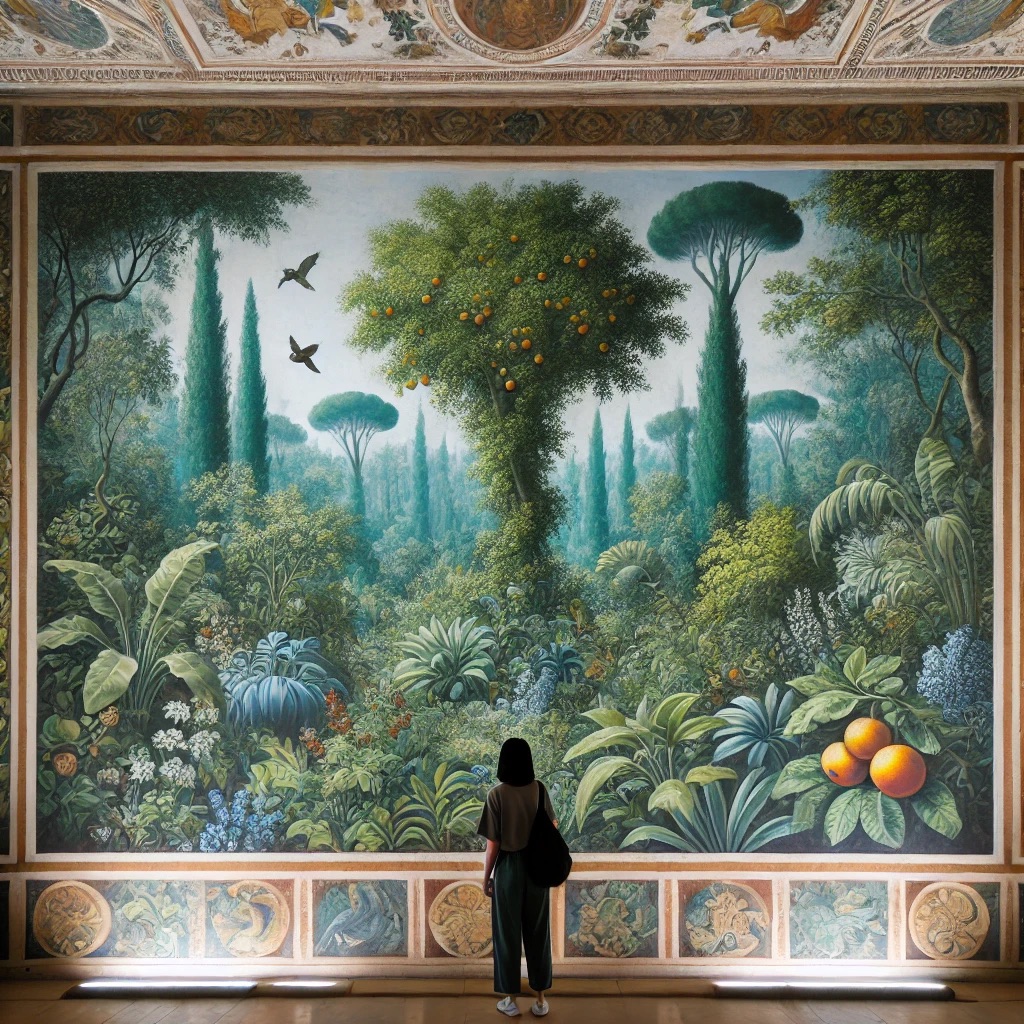ChatGPT:
The garden frescoes in the Villa of Livia, located at Prima Porta just north of Rome, are among the most celebrated examples of ancient Roman wall painting. These frescoes, found in what is believed to be a subterranean dining room (or triclinium), date back to around 30-20 BCE and are attributed to the Augustan period. The room’s frescoes are a masterpiece of illusionistic painting, depicting a lush, expansive garden that seems to extend beyond the walls, enveloping the viewer in an endless outdoor space.
Detailed Description of the Garden Scenes
- Panoramic Garden View:
- The frescoes cover all four walls of the room, creating an immersive garden scene that encircles the viewer. The paintings are characterized by their use of continuous landscape, which blurs the boundaries between the interior space and the depicted outdoor garden.
- Flora and Fauna:
- Plants and Trees: The frescoes depict an incredible variety of flora, including pomegranate, quince, date palms, oleander, and myrtle. Each plant is meticulously rendered, with attention to details like leaves, branches, and fruit. The trees are shown in full bloom or bearing fruit, symbolizing abundance and prosperity.
- Flowers: The garden is filled with vibrant flowers such as poppies, roses, and violets. The flowers are depicted in various stages of bloom, adding to the naturalistic feel of the scene.
- Birds and Animals: The frescoes include numerous birds, such as sparrows, doves, and goldfinches, perched on branches or in flight, enhancing the sense of life and movement within the garden. Insects like butterflies and bees also appear, adding to the realism and vibrancy of the scene.
- Depth and Perspective:
- The frescoes masterfully employ techniques of atmospheric perspective to create an illusion of depth. Distant trees and foliage are painted in softer, lighter hues, while those in the foreground are depicted in more vivid, detailed colors. This creates the impression of a garden receding into the distance.
- Architectural Elements: The garden is enclosed by a low fence and a higher wall, which are also painted, contributing to the illusion of an enclosed yet open space. The fence is painted in such a way that it seems to be just beyond the reach of the viewer, further enhancing the illusion of being within the garden.
- Atmospheric Effects:
- The frescoes also capture the changing light and atmosphere of a garden at different times of day. Subtle shading and the use of light and shadow suggest the play of sunlight filtering through the trees, adding to the immersive experience.
Significance of the Frescoes
- Symbolic Meaning:
- The garden frescoes are rich in symbolic meaning, particularly in their association with Livia Drusilla, the wife of Emperor Augustus. The lush, fertile garden likely symbolizes the peace, prosperity, and abundance brought about by Augustus’s rule, reflecting the ideals of the Pax Romana.
- The presence of fruit-bearing trees and blooming flowers may also symbolize fertility and the continuity of Augustus’s lineage, a theme that was central to the Augustan propaganda.
- Artistic Innovation:
- These frescoes are a prime example of the Roman “Second Style” of wall painting, known for its use of illusionistic techniques to create the impression of three-dimensional space. The Villa of Livia frescoes are particularly innovative in their naturalism and the sophisticated use of perspective, making them a significant development in the history of Roman art.
- Cultural and Historical Context:
- The frescoes reflect the Roman elite’s love of nature and gardens, which were central to Roman domestic life. Gardens were places of relaxation, entertainment, and contemplation, and the frescoes at Villa Livia embody this idealized connection to nature.
- The garden depicted in the frescoes also serves as a microcosm of the Roman world, bringing together plants from various parts of the empire, which may have symbolized the reach and unity of Roman rule.
- Preservation of Roman Botanical Knowledge:
- The detailed depiction of various plants and flowers in these frescoes also provides valuable insights into the botanical knowledge of the Romans. It shows their appreciation for horticulture and their ability to cultivate and recognize a wide variety of plant species.
Conclusion
The garden frescoes of the Villa of Livia are not only masterpieces of Roman art but also deeply symbolic works that reflect the cultural, political, and social ideals of the Augustan period. Their detailed and naturalistic portrayal of a lush, abundant garden, combined with innovative artistic techniques, creates an immersive environment that has captivated viewers for centuries. These frescoes offer a glimpse into the sophisticated world of the Roman elite and their idealized vision of nature and domestic life.
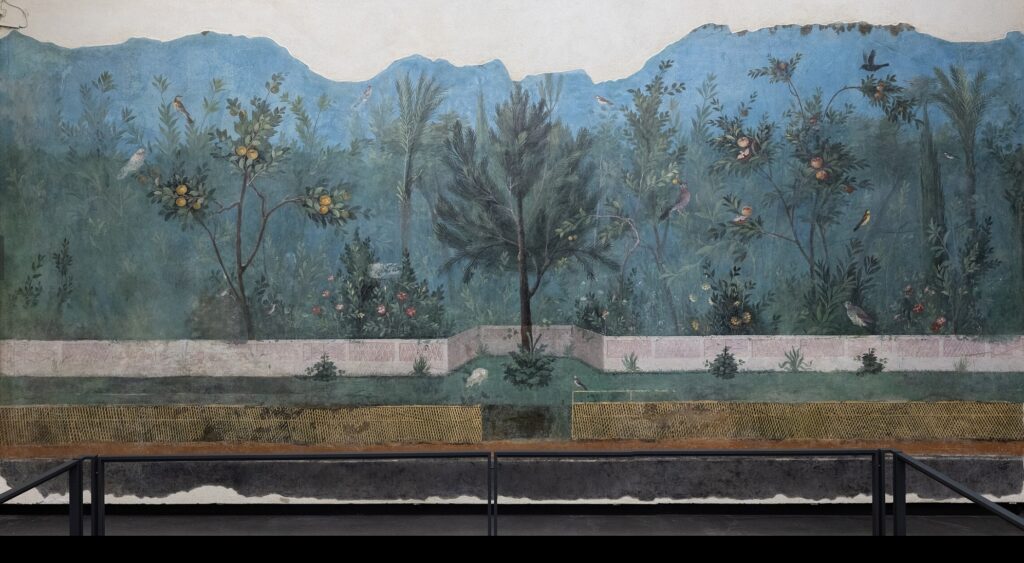
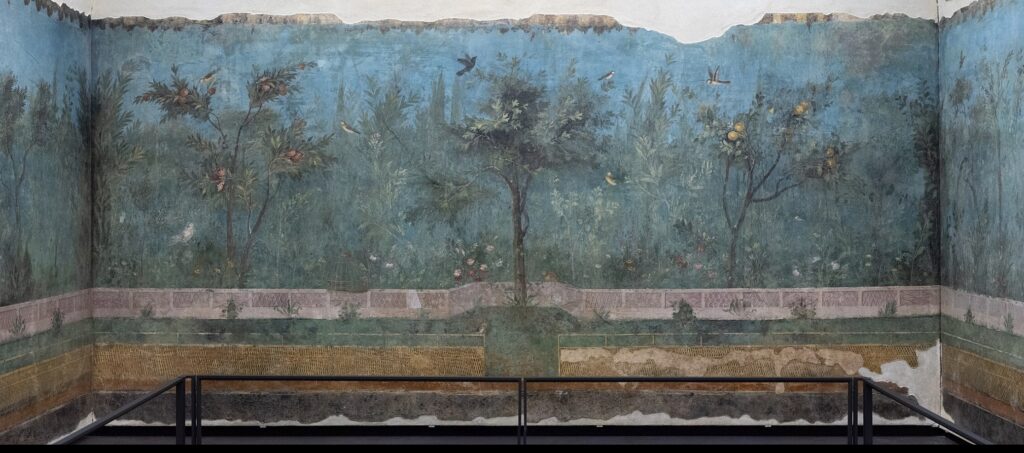
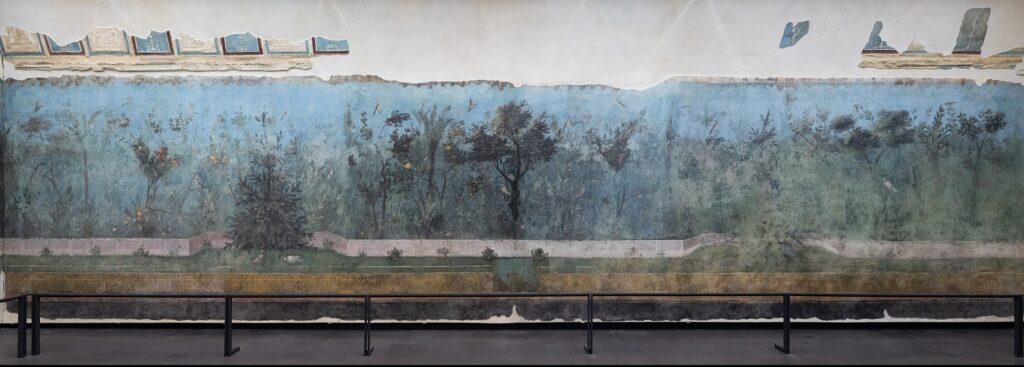
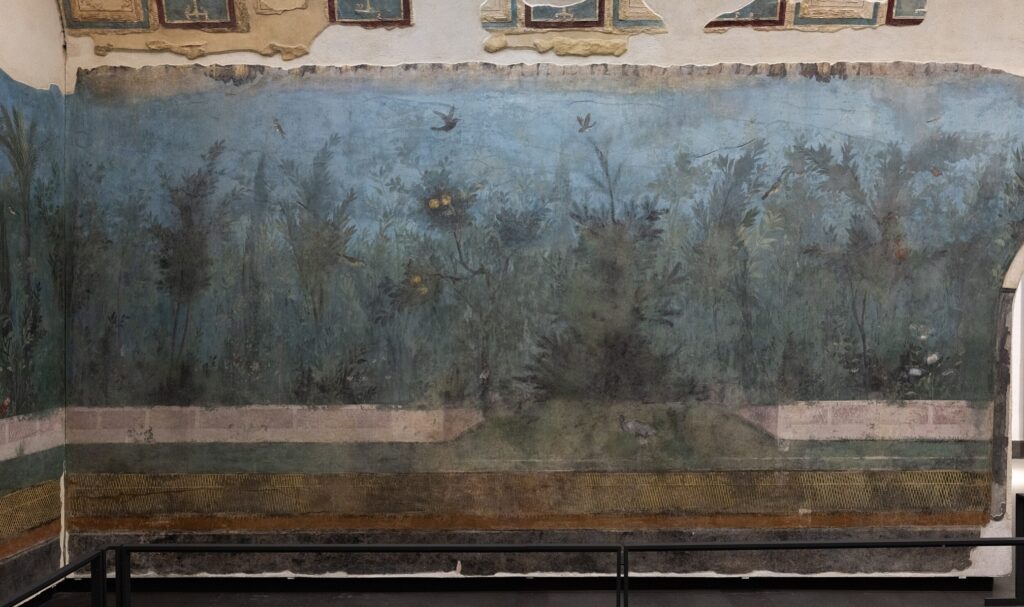
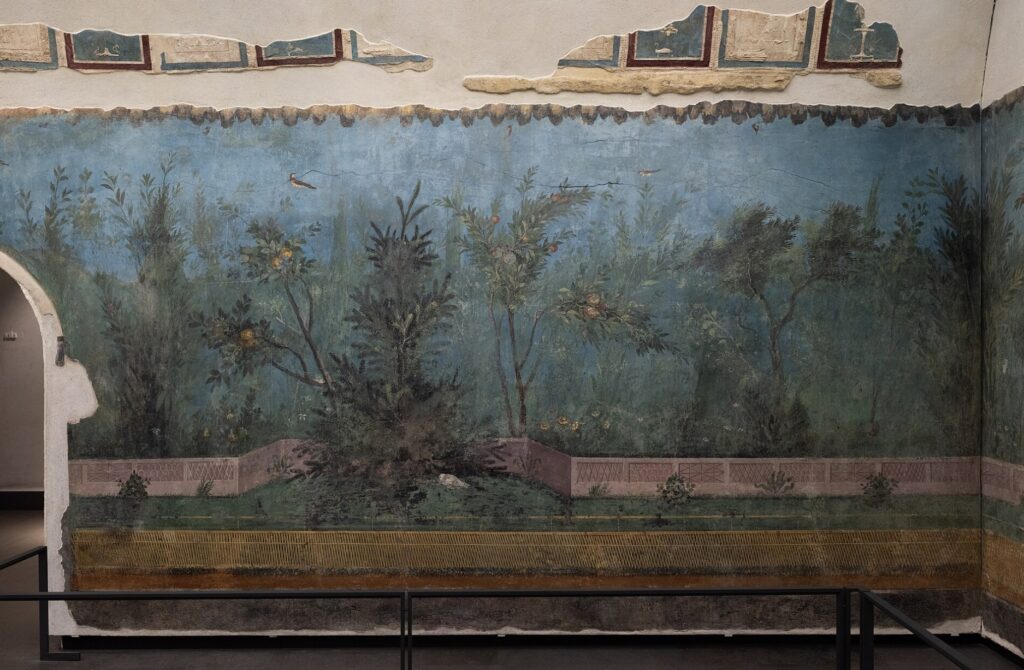
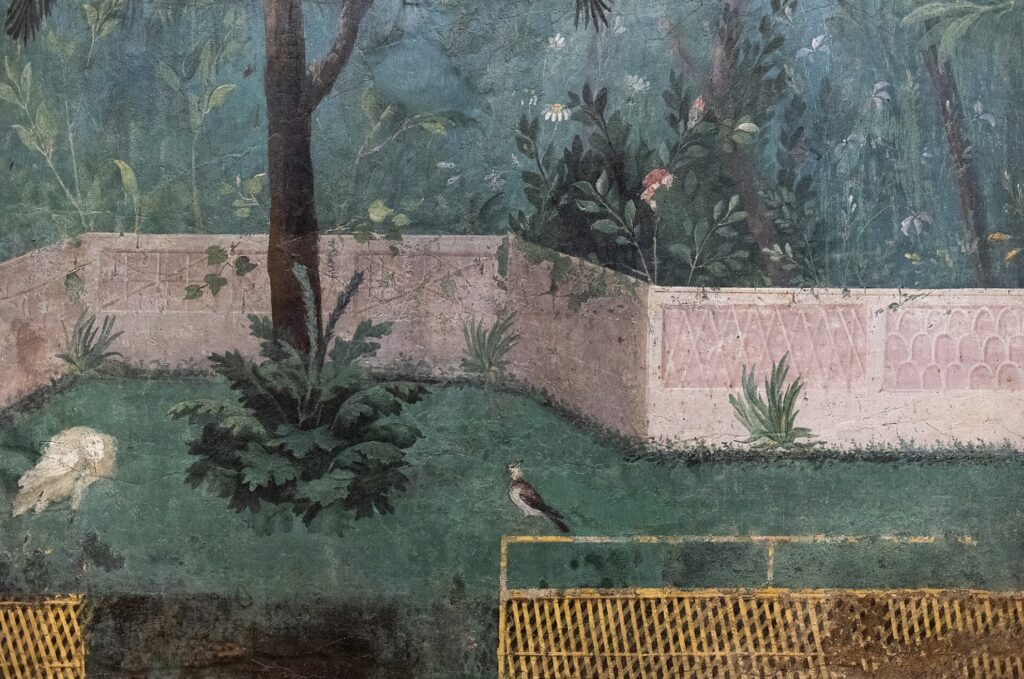
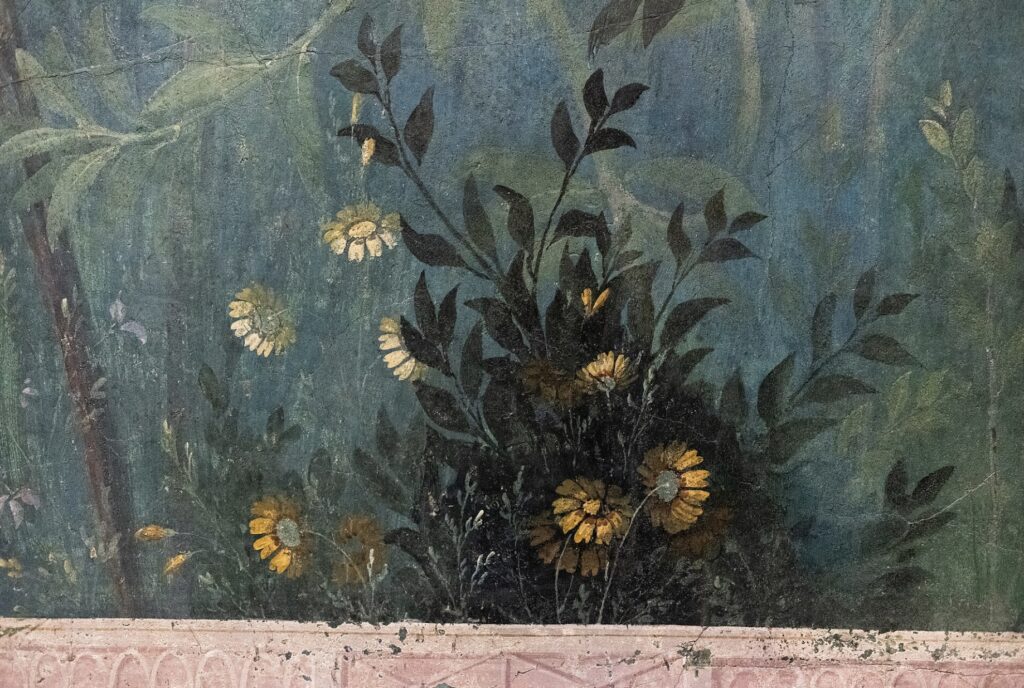
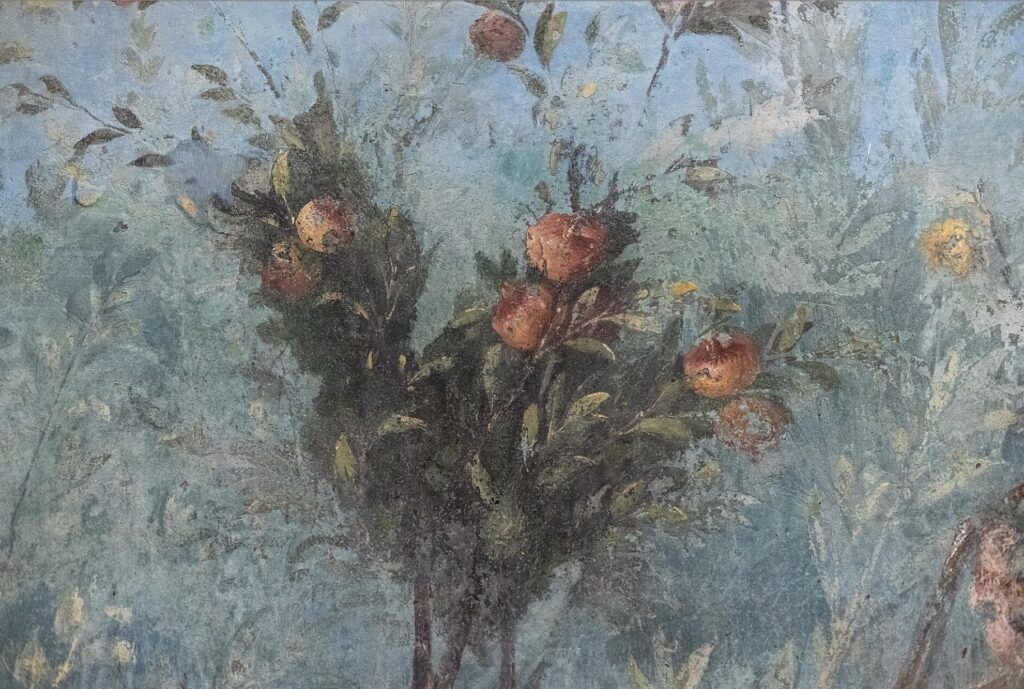
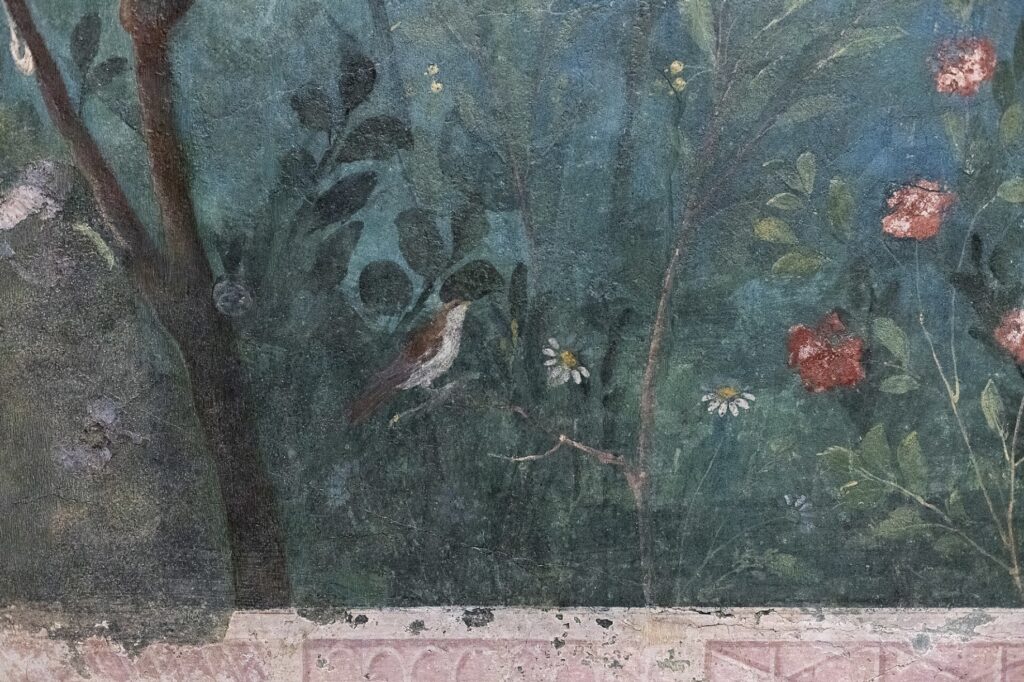
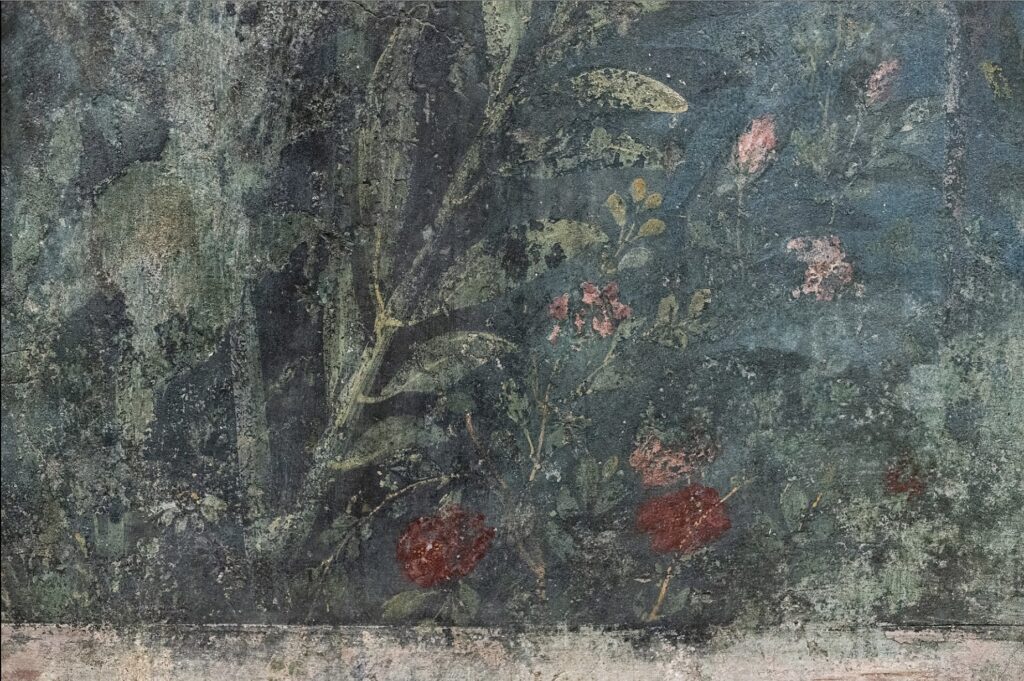
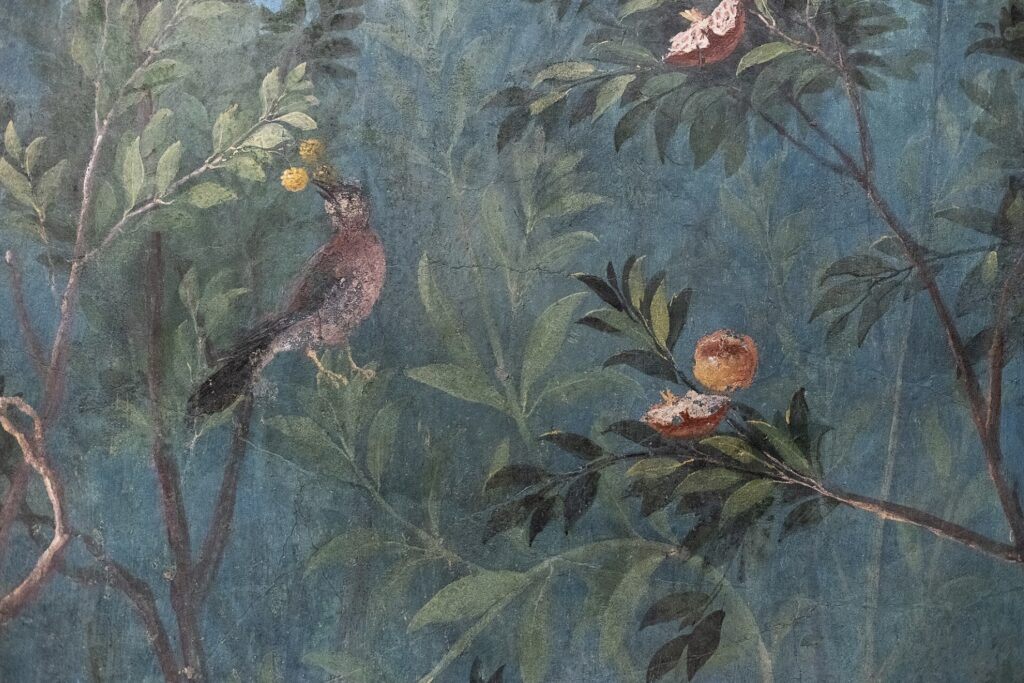
Ancient Roman frescoes are a remarkable testament to the skill and artistry of Roman painters, and their vibrant colors have endured for millennia due to the meticulous construction techniques used. Here’s how they were made and why the colors have lasted so long:
Construction of Roman Frescoes
- Preparation of the Wall:
- Arriccio Layer: The wall surface was first coated with a rough layer of plaster called the arriccio, made from a mixture of lime and sand. This layer provided a solid base for the fresco.
- Sinopia: After the arriccio dried, artists often sketched preliminary designs (called sinopia) directly onto this layer. These sketches served as guides for the final painting.
- Application of the Intonaco:
- Intonaco Layer: A smooth, fine layer of plaster, known as the intonaco, was then applied over the arriccio. This layer was made from lime and finely ground marble or other stone dust. The intonaco had to be applied in sections, as it needed to be wet for the painting process.
- Fresco Technique (Buon Fresco):
- Pigment Application: Pigments, made from natural minerals and organic materials, were mixed with water and applied directly onto the wet intonaco. The paint chemically bonded with the lime in the plaster as it dried, creating a durable and long-lasting image.
- Giornata: Because the plaster dried quickly, artists worked in small sections called giornata (meaning “a day’s work”). Each giornata corresponded to what the artist could complete in a single day.
- Secco Technique (Optional):
- Dry Painting: In some cases, details were added after the plaster dried using a technique called secco (dry fresco). Pigments were mixed with a binding agent like egg or glue, which made the colors more susceptible to fading compared to the buon fresco technique.
Why the Colors Remain Vibrant
- Chemical Bonding:
- The buon fresco technique involved applying pigments to wet plaster, allowing the colors to penetrate the plaster surface. As the lime in the plaster dried, it reacted with carbon dioxide in the air to form calcium carbonate. This chemical reaction locked the pigments into the plaster, creating a very stable and long-lasting bond.
- Use of Stable Pigments:
- Romans used pigments derived from naturally occurring minerals and materials that were chemically stable. For example:
- Red and Yellow Ochre: Made from iron oxide, these pigments are incredibly stable and have not faded over time.
- Cinnabar (Mercury Sulfide): Used for rich reds, this pigment is also very stable.
- Egyptian Blue (Calcium Copper Silicate): A synthetic pigment that was widely used and remains vibrant because it is chemically stable.
- Malachite and Azurite: Used for green and blue colors, these copper-based pigments are also stable.
- Protection from the Elements:
- Many frescoes were located indoors or in protected spaces, which shielded them from the direct effects of weather, sunlight, and other environmental factors that could have caused deterioration.
- Roman Construction Techniques:
- The Romans were master builders, and their understanding of materials helped preserve the frescoes. The walls were constructed to minimize moisture penetration, which could have otherwise damaged the plaster and pigments.
Conclusion
The durability and vibrancy of Roman frescoes are the result of sophisticated techniques involving chemical bonding between the pigments and plaster, the use of stable and high-quality pigments, and careful protection from environmental damage. These factors have allowed many Roman frescoes to retain their original beauty even after thousands of years.
There are several other Roman frescoes that rival the brilliance of the garden frescoes at the Villa of Livia in terms of artistic mastery, use of color, and illusionistic techniques. Here are some notable examples:
1. Villa of the Mysteries (Villa dei Misteri), Pompeii
- Location: Pompeii, Italy
- Date: 1st century BCE
- Description: The Villa of the Mysteries is renowned for its large, vibrant frescoes that depict scenes from the initiation rites of a mystery cult, possibly related to the worship of Dionysus (Bacchus). The frescoes are distinguished by their dramatic use of color, powerful figures, and complex narrative scenes. The figures are nearly life-sized and arranged in a continuous frieze, creating a powerful, immersive environment that envelops the viewer. The deep reds, intense blues, and rich purples used in these frescoes have remained remarkably vivid over time.
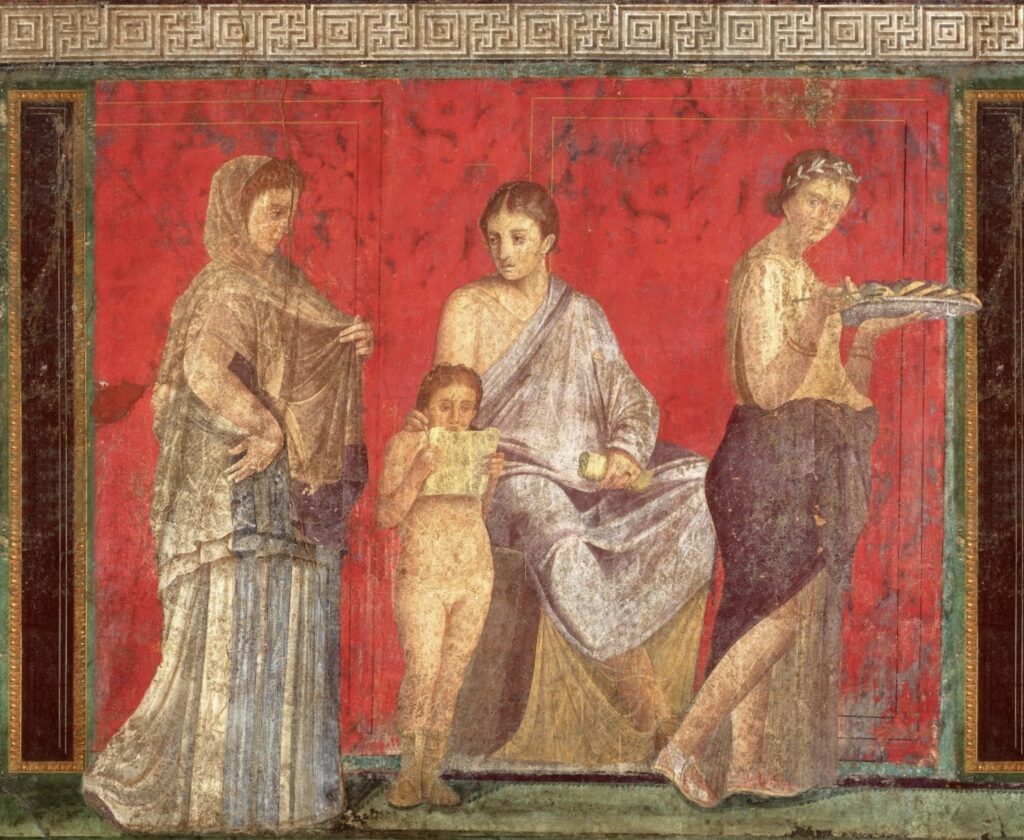
2. House of the Vettii, Pompeii
- Location: Pompeii, Italy
- Date: 1st century CE
- Description: The House of the Vettii is one of Pompeii’s most famous residences, featuring an extensive collection of frescoes that showcase the wealth and taste of its owners, Aulus Vettius Restitutus and Aulus Vettius Conviva, who were wealthy freedmen. The frescoes are notable for their use of the “Fourth Style” of Roman wall painting, characterized by complex compositions that mix large central panels with smaller, detailed scenes. The frescoes include mythological subjects, landscapes, and still lifes, rendered with a high degree of realism and artistic finesse. Particularly famous is the “Ixion Room,” where the punishment of Ixion, along with other mythological themes, is depicted in a vivid and dynamic manner.
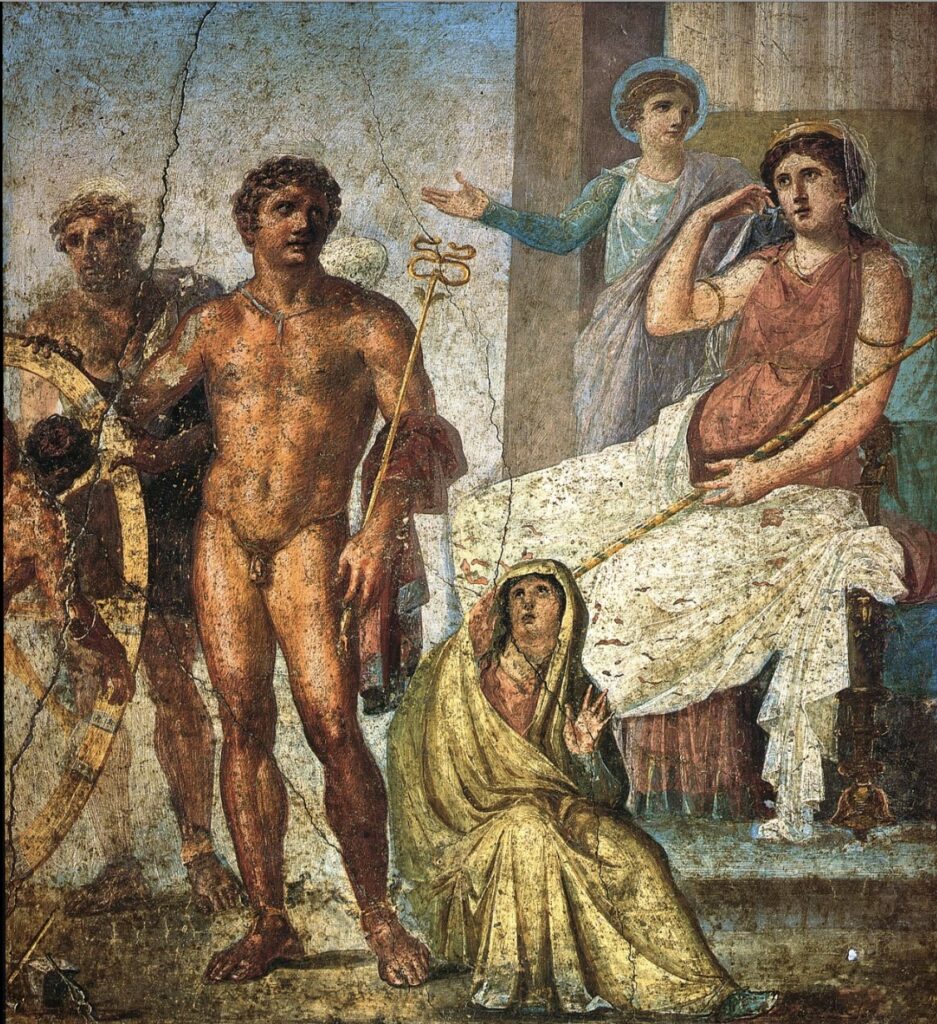
3. House of the Tragic Poet, Pompeii
- Location: Pompeii, Italy
- Date: 1st century CE
- Description: The House of the Tragic Poet is famous for its elaborate and detailed frescoes that depict scenes from Greek mythology and Roman theater. The frescoes, particularly those in the atrium and the tablinum, are celebrated for their dramatic narrative quality and the effective use of perspective to create depth. The “Sacrifice of Iphigenia” is one of the most striking frescoes here, showing a poignant moment from the Greek myth with emotional intensity and vivid colors. The skillful composition and the rich palette used in these frescoes contribute to their brilliance.
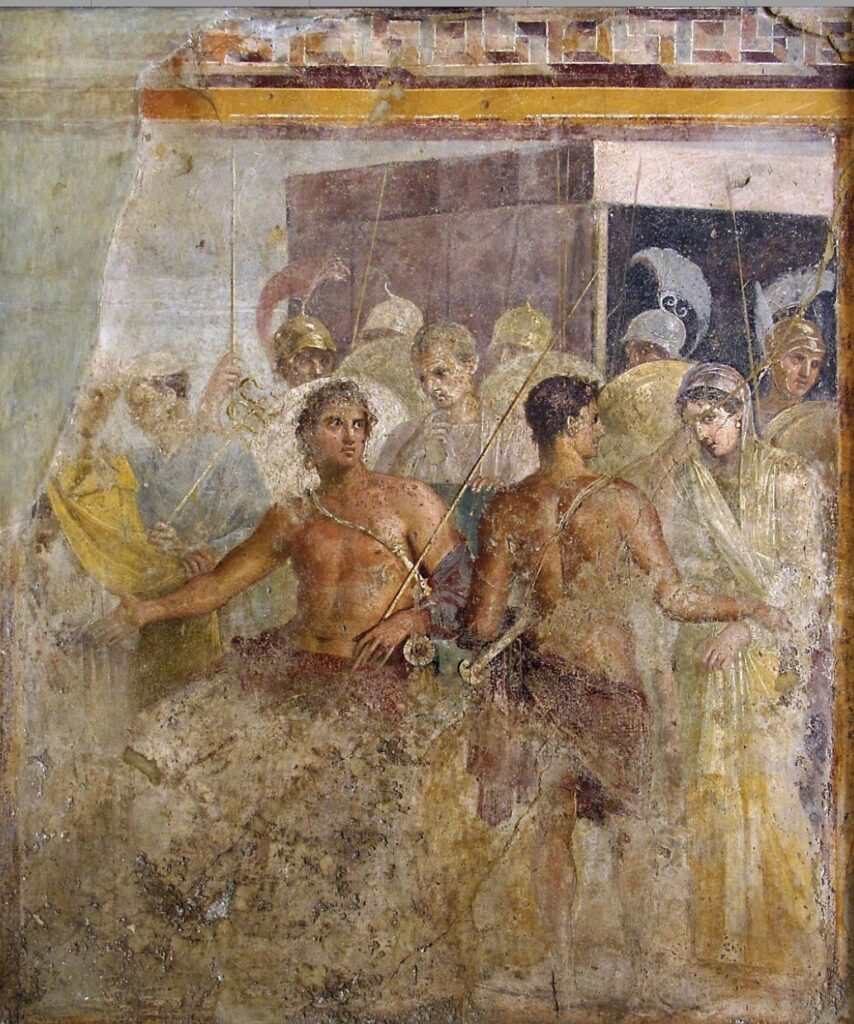
4. Villa of the Mysteries (Villa dei Misteri), Boscoreale
- Location: Boscoreale, near Pompeii, Italy
- Date: 1st century BCE
- Description: Not to be confused with the Villa of the Mysteries in Pompeii, the Villa of Boscoreale is known for its remarkable frescoes that provide insight into Roman domestic life and landscape painting. The frescoes here employ the “Second Style” of Roman wall painting, which creates the illusion of three-dimensional architectural elements and open landscapes. The vivid colors and sophisticated use of perspective in these frescoes create the illusion of an extended space, with views of imagined cities, gardens, and countryside scenes beyond the walls. The frescoes also feature detailed depictions of daily life, including scenes of sacrifice, banqueting, and various domestic activities.
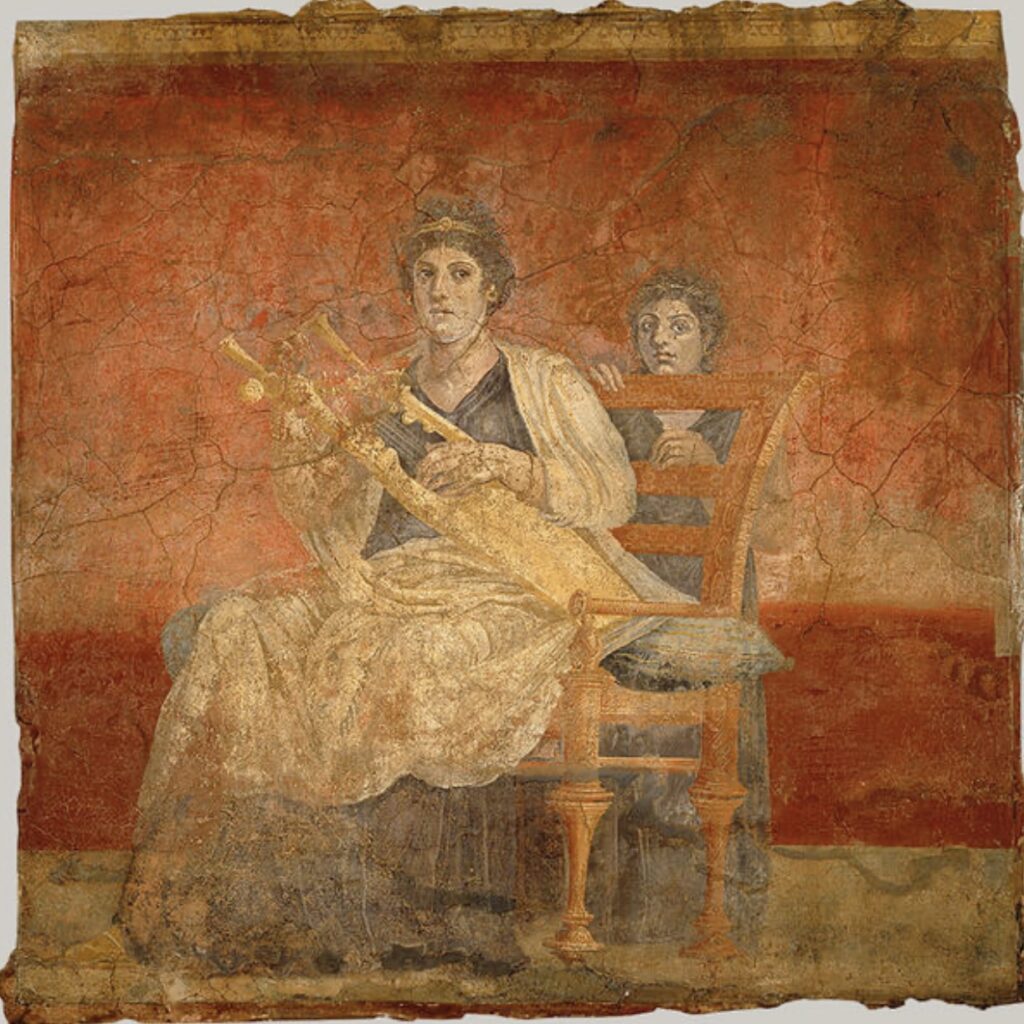
5. House of the Golden Bracelet, Pompeii
- Location: Pompeii, Italy
- Date: 1st century CE
- Description: The House of the Golden Bracelet is notable for its beautifully preserved frescoes that exhibit the opulence of its owners. The frescoes here are celebrated for their vibrant colors and intricate designs, including detailed depictions of architectural elements and lush garden scenes. The “Third Style” of Roman wall painting is prominently featured, characterized by its delicate, ornamental designs and the use of monochromatic backgrounds with small, intricate central motifs. The frescoes in the peristyle garden area, which depict lush greenery, birds, and architectural fantasies, are particularly admired for their elegance and refinement.
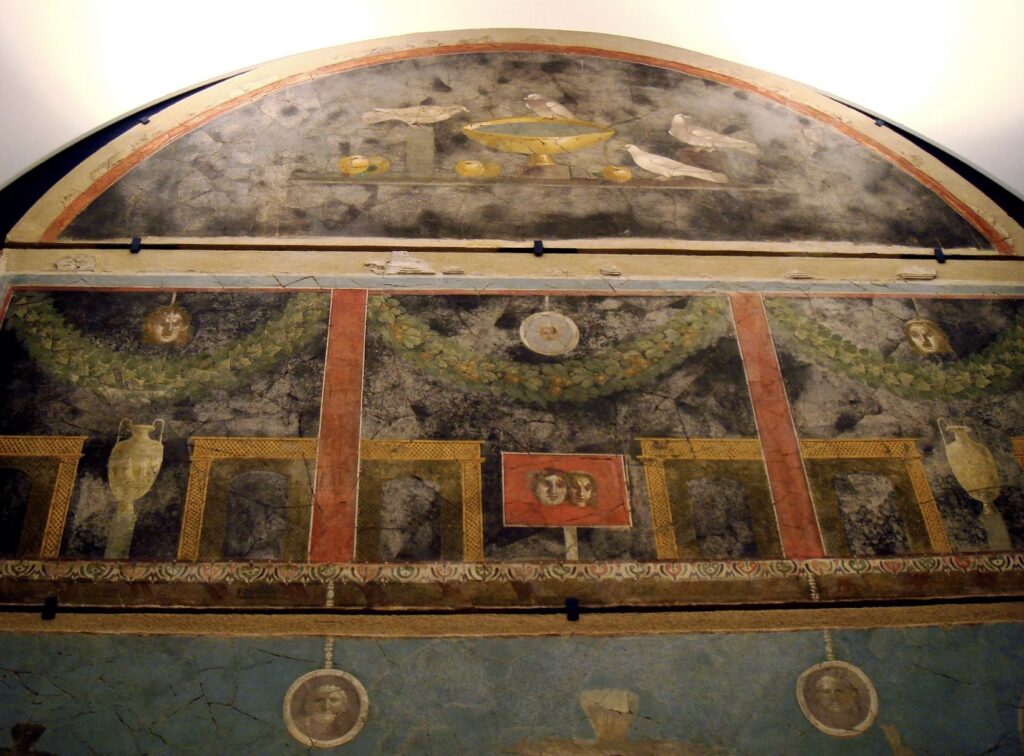
6. House of the Faun, Pompeii
- Location: Pompeii, Italy
- Date: 2nd century BCE
- Description: One of the largest and most luxurious homes in Pompeii, the House of the Faun is famous for its extensive and elaborate mosaic floors, including the renowned “Alexander Mosaic.” However, the house also contains exquisite frescoes that complement the mosaics. The frescoes here are less extensive than those in other villas but are no less significant for their artistic quality. They include depictions of mythological scenes, landscapes, and daily life, rendered in vibrant colors and with a keen eye for detail. The frescoes in the atrium and the peristyle garden are particularly notable for their sophistication and use of perspective.
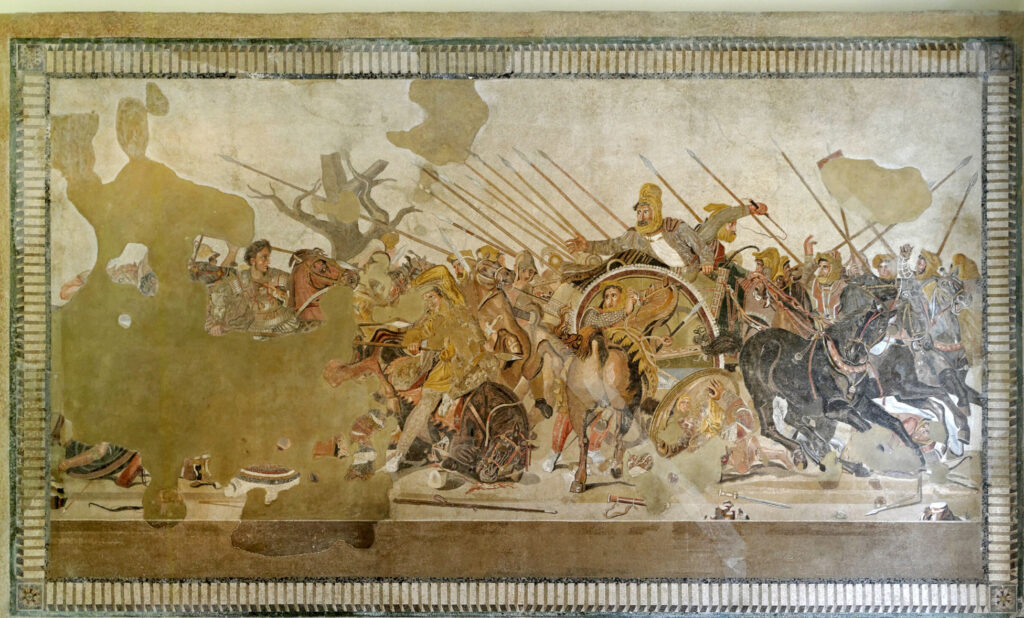
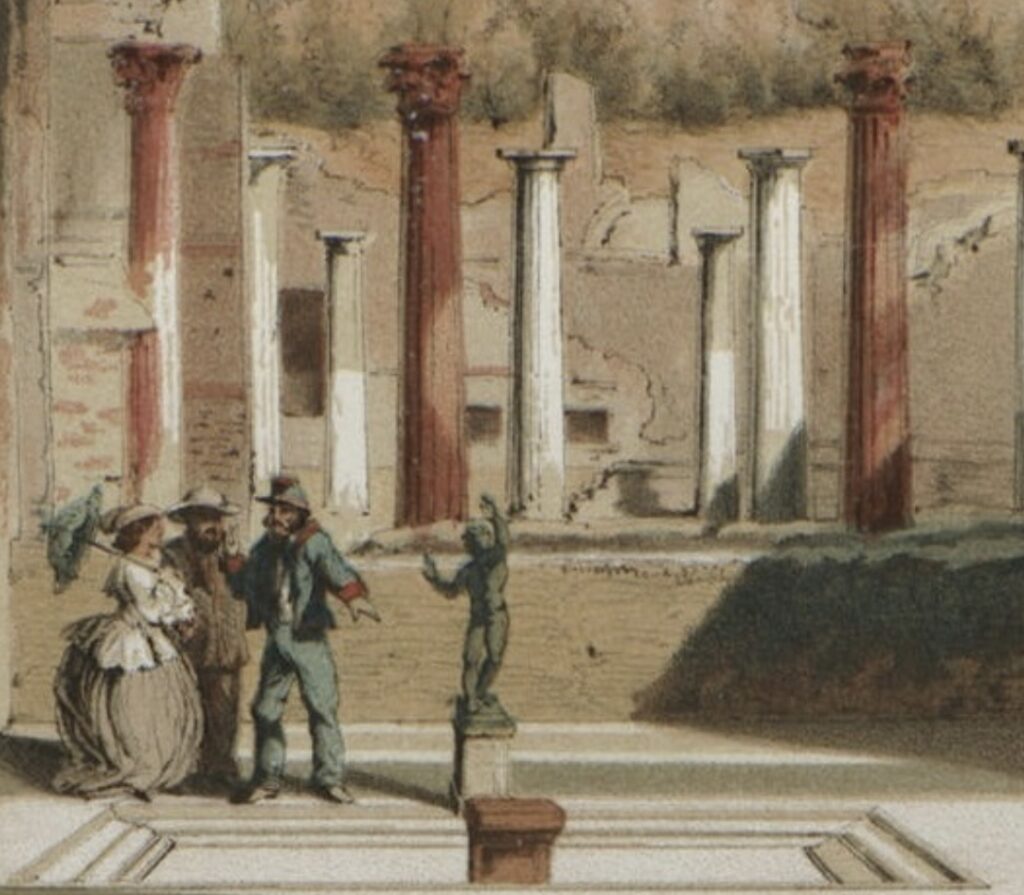
7. Villa of Agrippa Postumus, Boscotrecase
- Location: Boscotrecase, near Pompeii, Italy
- Date: 1st century BCE
- Description: The Villa of Agrippa Postumus is known for its exceptionally refined frescoes that exemplify the “Third Style” of Roman wall painting. These frescoes are characterized by their elegant, minimalist approach, featuring monochromatic backgrounds with delicate, intricate central motifs and architectural fantasies. The frescoes in the “Black Room” and the “Red Room” are particularly admired for their use of deep, rich colors and the delicate, almost ethereal quality of the decorative elements. The villa’s frescoes are celebrated for their sophisticated and understated beauty, reflecting the refined tastes of the Roman elite.
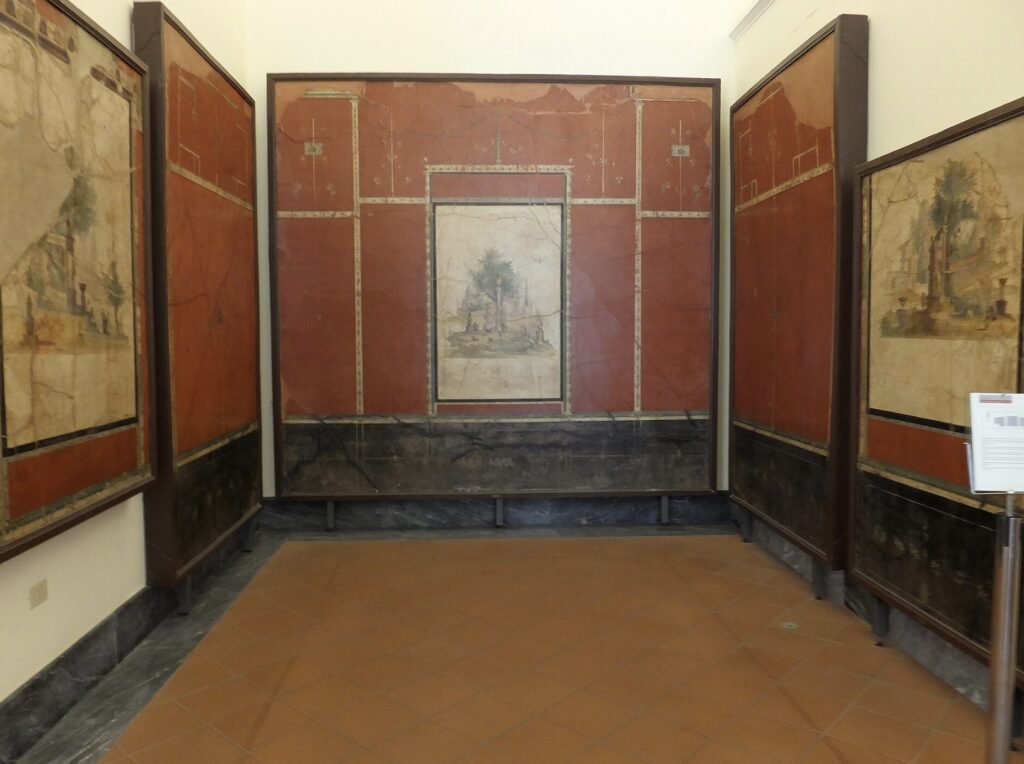
Significance of These Frescoes
These frescoes are significant not only for their artistic brilliance but also for the insights they provide into Roman culture, daily life, and the sophisticated techniques employed by Roman artists. The use of color, perspective, and narrative in these frescoes demonstrates the high level of skill and innovation in Roman art. They also reflect the values, beliefs, and aspirations of the Roman elite, who used these images to decorate their homes and express their social status and cultural knowledge.
The preservation of these frescoes, particularly in places like Pompeii and Herculaneum, offers a unique window into the past, allowing us to appreciate the artistic achievements of ancient Rome and their enduring legacy in the history of art.
